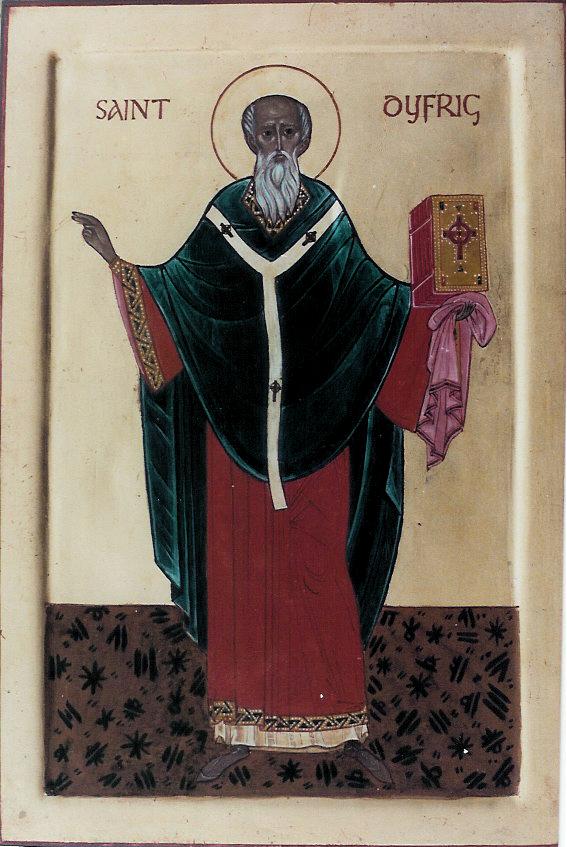Saint
Dubricius, Bishop (Dubritius, Dubric, Dyfig, Dyfrig,
Devereux)
He was born at Moccas (Moch Rhos = Pig's Heath), near
Hereford; died c.545. Some old genealogies show Dyfrig
as the great-great-grandson of Macsen Wledig and Elen of the
Ways.
Saint
Dyfrig was an important church leader, a monk, in southeast
Wales and western Herefordshire. His earliest foundation was
Ariconium (Archenfield, Hereford), but his most important
centres were at Hentland (Henllan) and Moccas in the Wye
valley. Dyfrig attracted numerous disciples to the two
monasteries, and from them founded many other monasteries
and churches.
He was associated with Saint Illtyd (f.d. November 6) and,
according to the 7th-century "vita" of Saint Samson, with
the island of Caldey for whose monastery he appointed Saint
Samson (July 28) abbot. Later he consecrated Samson bishop.
An ancient, but incomplete, inscription at Caldey reads "Magl
Dubr" ("the tonsured servant of Dubricius").
Dyfrig and Saint Deinol (Daniel; f.d. September 11) were the
two prelates who convinced Saint David (f.d. March 1) to
attend the synod of Brefi. Dyfrig spent the last years of
his life at Ynys Enlli (Bardsey) and died there.
[ In later medieval legends he becomes the 'archbishop of
Caerleon' (Caerlon-on-Usk) and, according to Geoffrey of
Monmouth, crowns 'King' Arthur at Colchester (he is the high
saint of "Idylls of a King"), and the ecclesiastical
politics of the 12th century claimed him as founder of the
Normans' see of Llandaff, where he was one of the four
titular saints of the cathedral. The later "vita"
written by Benedict of Gloucester claims that Dyfrig was a
disciple of Saint Germanus of Auxerre (f.d. July 31), but
this is unlikely. Legend also states that Saint David
resigned in his favour as metropolitan of Wales. ]
The relics of Saint Dyfrig were translated from Bardsey to
Llandaff in 1120. He is the 'Dubric the high saint, Chief of
the church in Britain' of Tennyson's "Coming of Arthur,"
and the place-name Saint Devereux in Herefordshire is a
corruption of the saint's name.
Church dedications to him at Gwenddwr (Powys) and Porlock
(Somerset) suggest that his disciples were active in the
expansion of Christianity to the west and southwest,
possibly in association with the multitudinous children
Saint Brychan of Brecknock (f.d. April 6) (Attwater,
Benedictines, Doble, Delaney, Farmer).
In art Saint Dubricius is depicted holding two crosiers and
an archiepiscopal cross. He is venerated in Herefordshire,
Monmouthshire, and Caldey Island (Roeder).

